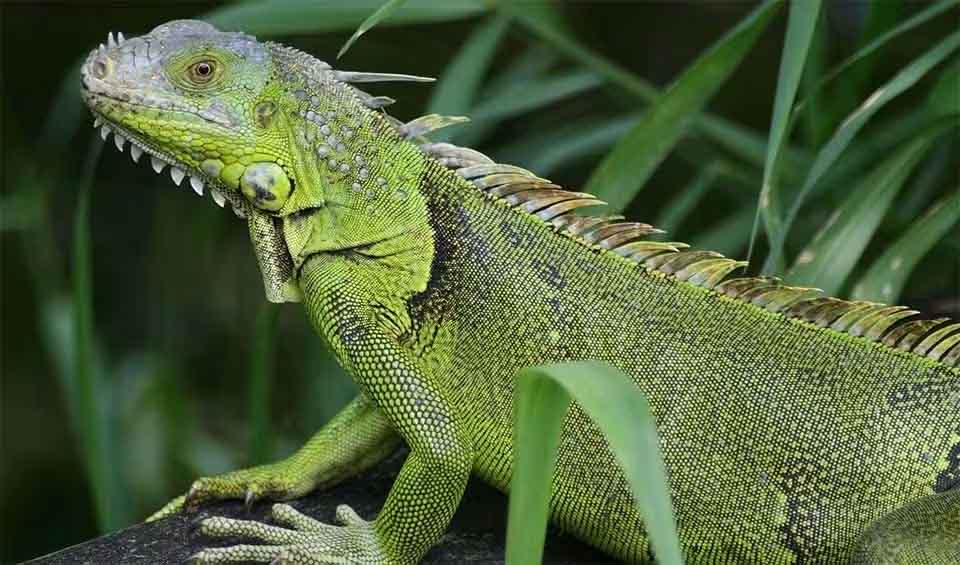Iguana – Green & Lesser Antillean iguana
These lizards weigh up to 14 kg (30 pounds) and are excellent natural-born swimmers
The genus Iguana encompasses a diverse group of reptiles, including two distinct species known for their unique adaptations and ecological roles. The green iguana, distributed widely across the Americas, stands as one of the most recognizable and frequently traded lizards in both legal and illegal pet markets. In contrast, the Lesser Antillean iguanas inhabit the exclusive confines of the Lesser Antilles, a cluster of islands nestled within the Caribbean Sea.
Both species of iguanas exhibit herbivorous dietary preferences, consuming a varied menu of fruits, flower buds, and tender leaves to sustain their energy needs. However, occasional deviations from their plant-based diet may occur, with some individuals opportunistically indulging in protein-rich treats like mealworms or wax worms.
Despite their formidable stature, iguanas face numerous challenges in the wild, particularly from predation. Young iguanas, in particular, are vulnerable to attacks from predatory mammals such as dogs and wild cats, contributing to population declines in certain regions. To defend themselves, iguanas possess a unique adaptation in the form of their tail, which boasts sharp spines capable of delivering a defensive blow akin to a whip-like strike, deterring would-be attackers.
In addition to their defensive capabilities, iguanas play vital roles in their ecosystems as seed dispersers and herbivores, influencing plant communities and nutrient-cycling processes. Their presence contributes to the maintenance of biodiversity and ecosystem stability in their respective habitats.
Species in this genus
Green iguana
From the US down to Brazil, this trans-American lizard is the most common iguana


